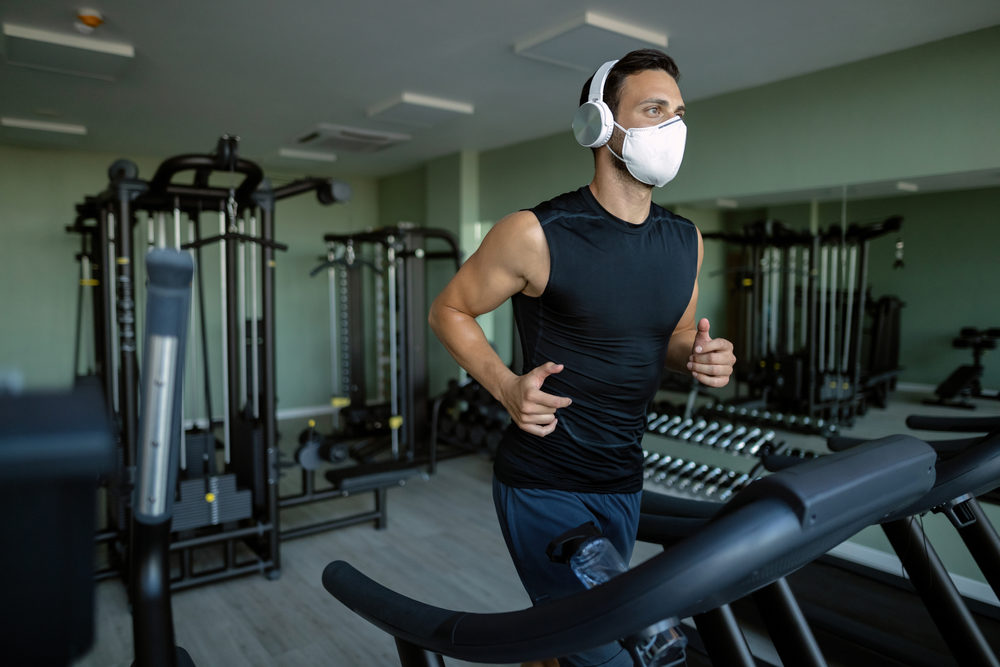With COVID numbers going down and vaccination numbers rising, you may feel ready to head back to the gym. Here’s how to stay safe while getting back into your workout routine.
After months of home workouts — or not working out at all — pandemic restrictions are easing up as COVID numbers go down, and New Yorkers are ready to head back to the gym. While you may want to jump back into your former routine immediately, it’s best to ramp up slowly. Your muscles and joints likely need time to get back in shape after a prolonged rest.
Beginning at the same point where you left off before the pandemic, or going too fast to reach that target, may result in serious injuries to your joints, muscles, and tendons. Instead, ease in safely by protecting your body from some common injuries.
Common Gym Injuries — and What Causes Them
Here are four common injuries you may experience on your return to the gym if you don’t take the proper precautions.
Disc Herniation. For weightlifters, the overhead standing lift is a great way to tone the shoulder muscles. However, after months away from the gym, you may fall into the bad habit of arching your back to help lift heavy weights. That position stresses your lower back, which could result in a painful herniated disc.
Hip Injuries. Even if you’ve walked or jogged regularly during quarantine for your cardio workout, your body still needs to adjust to a gym treadmill. You may alter your gait to match the faster pace or accommodate the narrower pathway of the treadmill. This can lead to a muscle imbalance in the hips and knees. When that happens, you strain the IT band (a stretch of fibrous tissue running from the hip to the knee) and the hip flexors (the muscles connecting the thigh bone, pelvis, and lumbar spine), potentially leading to joint inflammation, tendonitis, or hip bursitis.
Elbow Tendonitis. Bicep curls sculpt your upper arms, but if you’re doing them the wrong way, you could injure your forearm and elbow tendons. To avoid tendonitis, use lighter weights (at least in the beginning) so you’ll curl the weight rather than “swinging” it. Also, don’t bend your wrist inward toward your body, as this will distribute your body weight unevenly across your forearm, which can damage the elbow tendons.
Knee Injuries. If toning your quadricep muscles with weighted leg extensions is an important part of your gym routine, remember to protect your knees when doing the reps. Using too-heavy weights or performing too many reps will inflame the cartilage behind your kneecap. This causes patella-femoral pain, which makes it difficult to walk, kneel, or stand from a seated position.
Tips to Stay Safe On Your Return to the Gym
If you’ve been stuck at home for several months, you’ll likely need some time to reach your pre-pandemic level of fitness. Here are four tips to help you hit that goal without an injury:
Warm Up Thoroughly. Warm up your muscles and joints with a pre-workout stretching routine, or simply try walking, light jogging, or biking. This floods the muscles with blood before you start your workout in earnest.
Go Light and Slow. You may be tempted to start at the same level you were prior to the pandemic, but that could be harmful to your muscles. If you were able to lift a set number of pounds before the pandemic, resume your workouts by cutting that amount in half and slowly working your way up to where you were with increasingly heavier weights. At least at the start, wear a weightlifting belt to stabilize and protect your back.
Regain Your Form. After being away from the gym for months, you’ve likely fallen into some bad habits, such as poor alignment of your spine and/or posture. On your return, get back to proper weightlifting form by working with a trainer so you don’t put undue stress on your vertebrae.
Know When to Stop. A degree of muscle soreness is natural during and after a workout. But if the pain lingers, or if you experience sudden sharp pain, numbness, or tingling, take a break to give your body time to heal. Or, see an orthopedist if the pain doesn’t subside with rest. It could indicate a serious injury requiring treatment.
Before You Head to the Gym
The orthopedists and physical therapists at New York Bone & Joint Specialists are ready to help you re-start your fitness program or treat a post-pandemic injury. We offer advice and therapies to make your re-entry to the gym safe and rewarding. Contact us today for a consultation.





